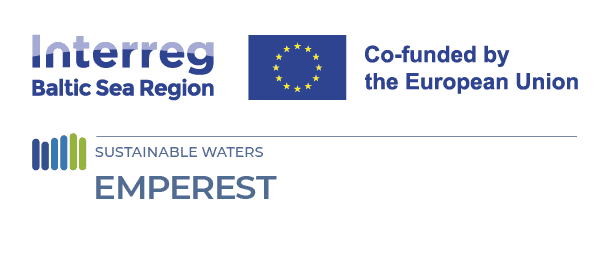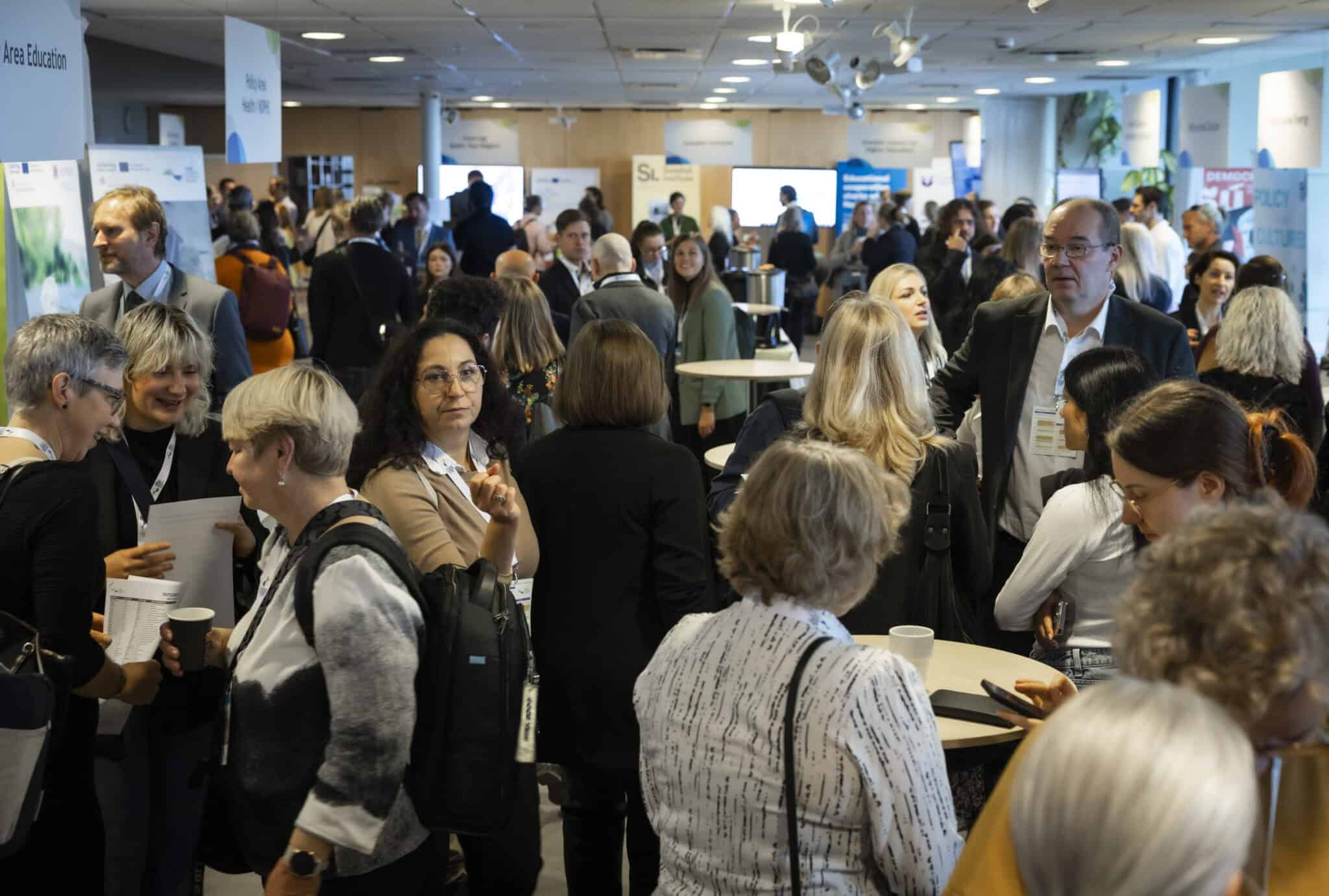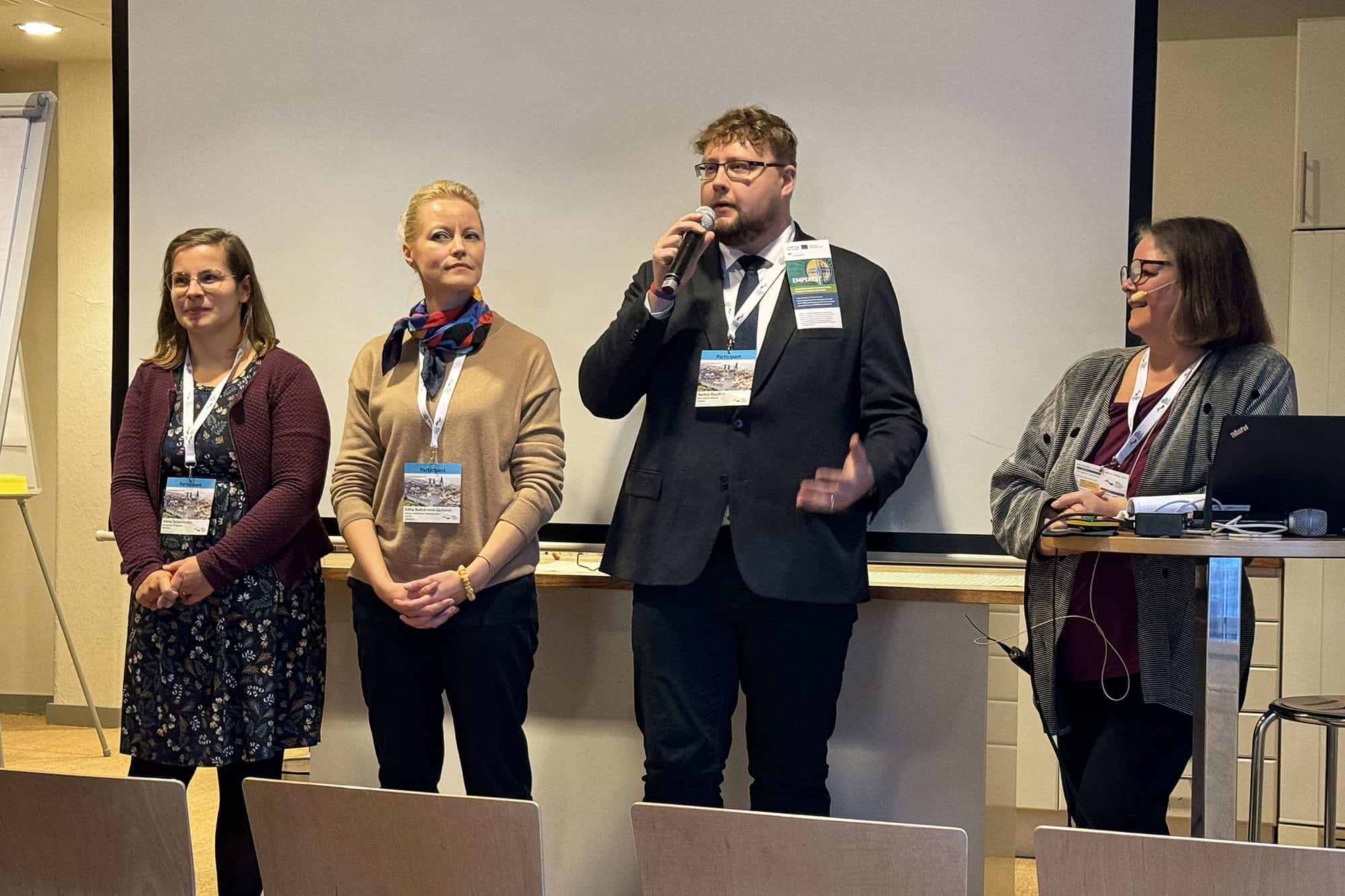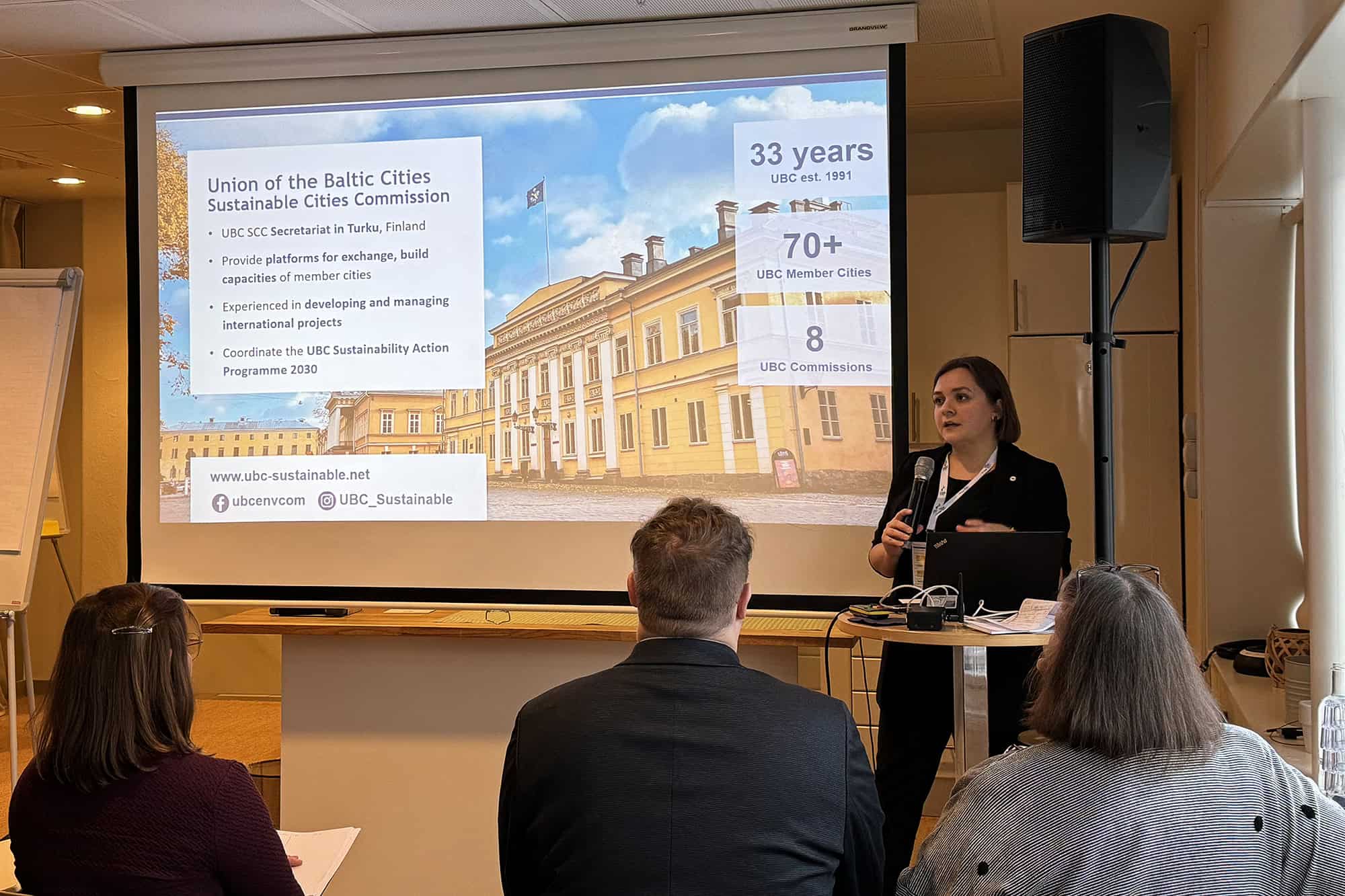
EMPEREST and APRIORA share measures to tackle micropollutants at the EUSBSR Annual Forum
06 November 2024
This is exactly what we aimed to do, as the EUSBSR Policy Area Hazards coordinator invited respective stakeholder groups to join in for a shared discussion!
The Annual Forum of the EU Strategy for the Baltic Sea Region is the best place for transnational discussions, and this year the Forum, celebrating its 15th anniversary, hosted around 650 participants! The Forum took place in the heart of the Baltic Sea, organised by the Region Gotland in the Swedish city of Visby on 29-31 October 2024.

On the photo: Participants on the EUSBSR Annual Forum. This and the cover photo: Karl Melander
PFAS and pharmaceuticals: have we been here before?
The projects EMPEREST and APRIORA, both funded by Interreg BSR, work with micropollutants: PFAS and pharmaceuticals respectively. In the session organised by EUSBSR Policy Area Hazards, these projects joined their forces with the Baltic Sea PFAS network, as well as the NonHazCity 3 project, to raise awareness about hazardous substances among important stakeholders in the Baltic Sea Region. Together, these projects and networks organised a seminar “Let’s talk about PFAS: Connecting PFAS strategies in the BSR”, which attracted ca. 60 active participants representing national, regional and local authorities, water utilities, universities and international organisations.
The approaches presented in the seminar were related to both upstream and downstream measures, and their implementation. In other words, the focus was both on how to prevent and reduce pollution of hazardous substances and on how to remove those substances from the environment, especially the water cycle. PFAS, i.e. per- and polyfluoroalkyl substances, were in the spotlight in the seminar. PFAS are used in many products because of their useful properties, such as water and grease repellency, but today research shows that they represent a threat to the environment and human health.
The APRIORA project, in contrast, brought an important reference and an answer to the question “Have we been here before?” with the project’s work on pharmaceuticals. This substance group represents the previous focus of research related to hazardous substances in the environment. With decades of research work, a crucial step forward is ahead of us: currently, new legislation proposals actually include pharmaceuticals, e.g. in the Urban Wastewater Directive (UWWTD) to evaluate removal efficiencies of integrated advanced treatments and in the update of environmental quality standards under Water Framework Directive (WFD) as new thresholds. Hence, APRIORA works on implementation into administrative practice now. As the work with PFAS seems to be accelerated compared to pharmaceuticals, the perspective is promising.
EMPEREST solutions for cities and the whole region
EMPEREST project accomplishments were presented by Markus Raudkivi from HELCOM (Baltic Marine Environment Protection Commission) and Mariia Andreeva from Union of the Baltic Cities Sustainable Cities Commission.
Markus Raudkivi gave an overview of the work aiming at harmonizing the monitoring of the PFAS situation in the Baltic Sea for a better understanding of the area. For that, the EMPEREST project led a data call last year, collecting vast amounts of monitoring data from the whole Baltic Sea region. Although the gathered results show some positive signs with PFAS concentrations in sea water, the situation in biota is much more complicated. Compared to the new PFAS thresholds currently on the table in EU discussions with significantly lower “safe for human health” values for fish, the picture is highly concerning – we are very far from having most fish in the Baltic Sea to be “safe” to eat. Still, the work in the region has progressed a lot, with increasingly more substances from the large group of PFAS being banned or restricted and general awareness reaching an all time high.
“Only five years ago, when talking to people about PFAS, you needed to convince them that the work is important. Nowadays, most people know and understand why the work against PFAS is vital,” explained Markus Raudkivi, project coordinator at HELCOM.

On the photo: Alena Seidenfaden (left), Edita Baltrėnaitė-Gedienė, Markus Raudkivi and Heidrun Fammler answering questions from the audience at the PFAS seminar on 30 October. Photo: Marek Swinarski.
Mariia Andreeva brought to the stage the city perspective and the solutions that EMPEREST offers for cities aspiring to be water-smart. The topic of PFAS is relatively new to local authorities, however, the concern about PFAS has been growing in the past few years. In collaboration with other actors, such as water utilities, cities can contribute to the elimination of this threat. The PFAS risk-assessment tool built in the EMPEREST project is a first step for cities in the identification and mitigation of their PFAS-related risks. Further, the training materials produced in the project will help cities to strengthen their capacities.
“It is only with coordinated actions that we can address the transboundary topic of PFAS,” emphasized Mariia Andreeva, communications coordinator at UBC Sustainable Cities Commission.

On the photo: Mariia Andreeva giving a pitch on city collaboration in PFAS work. Photo: Marek Swinarski.
APRIORA sets the priorities in wastewater treatment
In the APRIORA presentation, Alena Seidenfaden, representing the project’s Lead partner University of Rostock, gave an overview about the project’s idea how to help the authorities and agencies in charge of the upcoming task to prioritise wastewater treatment plants for upgrading with advanced treatment. According to the revised UWWTD, a risk assessment will be required for medium sized plants but not yet specified. Here, APRIORA steps in to support and implement most recent outcomes from research regarding pharmaceuticals. The development of the tool focuses on adaptivity and being integrable in current management practices. With regard to PFAS, similar approaches could be applicable in future.
“Today, removing pharmaceuticals from wastewater is relatively easy but doing the same for PFAS is complicated. Not so long time ago, removing pharmaceuticals was also complicated. We can expect similar progress to happen also for PFAS and related research,” shared Alena Seidenfaden, research assistant at the University of Rostock.
Significant efforts to address PFAS are already done by the projects and initiatives presenting in Visby. But the cooperation only begins here, and the projects EMPEREST and APRIORA will continue cooperation to reach out to the relevant stakeholders with ready solutions. Already in February 2025 the projects will organise a joint outreach event for German stakeholders, stay tuned!
WHAT?
Seminar session “Let’s talk about PFAS: Connecting PFAS strategies in the BSR” at the Annual Forum of EU Strategy for the Baltic Sea Region
WHERE ?
Visby, Sweden
WHEN?
30 October 2024
WHO?
Organiser: EUSBSR Policy Area Hazards Coordinator Louise Floman (Swedish Agency for Marine and Water Management)
Moderators: Mayumi Narongin-Fujikawa (Swedish Environmental Research Institute IVL) and Heidrun Fammler (Baltic Environmental Forum)
Speakers: Aleksandra Rutkowska (DetoxED Ltd.), Markus Raudkivi (HELCOM), Mariia Andreeva (Union of the Baltic Cities Sustainable Cities Commission), Sara Zentner (City of Stockholm), Susanna Olsson (Goodpoint), Alena Seidenfaden (University of Rostock), Edita Baltrėnaitė-Gedienė (Vilnius Tech)
In collaboration with the projects EMPEREST, APRIORA, NONHAZCITY3 and Achieving Zero PFAS
Article written by: Lotta Lehti and Mariia Andreeva (Union of the Baltic Cities Sustainable Cities Commission), and Alena Seidenfaden (University of Rostock)





